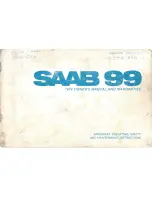
Polishing
The vehicle should only be polished if
the paintwork has become stained or
lost its lustre. Do not polish parts with a
mat coating and the plastic bumpers.
Doing so could cause stains or damage
the finish.
Cleaning plastic parts
Use a sponge or chamois leather. If a
car wax adheres on a grey or black
rough surface of the bumper, moulding
or lamps, the surface becomes white.
In such a case, wipe it off using
lukewarm water and soft cloth or
chamois leather.
208) 209)
Chrome parts
In order to prevent spots and corrosion
of chrome parts, wash with water, dry
thoroughly, and apply a special
protective coating. This should be done
more frequently in winter.
Aluminium wheels (if so equipped)
Remove dirt using a sponge while
sprinkling water on the wheel.Use
neutral detergent on any dirt that
cannot be removed easily with
water. Rinse off the neutral
detergent after washing the
wheel.Dry the wheel thoroughly
using a chamois leather or a soft
cloth.
210) 211) 212) 213)
Window glass
The window glass can normally be
cleaned using only a sponge and water.
Glass cleaner can be used to remove
oil, grease, insect carcasses, etc. After
washing the glass, wipe it dry with a
clean, dry, soft cloth. Never use a cloth
that is used for cleaning a painted
surface to clean a window. Wax from
the painted surface could get on the
glass and lower glass transparency and
visibility.
NOTE To clean the inside of the rear
window, always use a soft cloth and
wipe the window glass along the
demister heater element so as not to
cause damage.
NOTE Do not use pure windscreen
washer fluid for cleaning the front
windscreen and rear screen; dilute it by
at least 50% in water.
Wiper blades
Use a soft cloth and glass cleaner to
remove grease, insect carcasses, etc.,
from the wiper blades. Replace the
wiper blades when they no longer wipe
properly.
Engine compartment
Clean the engine compartment at the
beginning and end of winter. Pay
particular attention to flanges, crevices
and peripheral parts where dust
containing road chemicals and other
corrosive materials might collect.
If salt and other chemicals are used on
the roads in your area, clean the engine
compartment at least every three
months.
Never spray or splash water on the
electrical components in the engine
compartment, as this may cause
damage.
Do not bring the nearby parts, the
plastic parts and so on into contact
with sulphuric acid (battery electrolyte)
which may crack, stain or discolour
them.
If they are in contact, wipe off with soft
cloth, chamois or the like and an
aqueous solution of neutral detergent
then immediately rinse the affected
parts with plenty of water.
Versions with tonneau cover
Hand washing is recommended for the
tonneau cover; modern automatic
washing systems equipped with soft
brushes which do not apply excessive
pressure with specific products may be
used.
Never use high-pressure washing
systems. If a water jet is used, direct
away from the edges of the fabric and
the rear window to prevent water
infiltration.
264
SER
VICING
AND
MAINTENANCE
Summary of Contents for Fullback Club cab
Page 1: ...O W N E R H A N D B O O K F I A T F U L L B A C K...
Page 2: ......
Page 10: ......
Page 278: ...VEHICLE DIMENSIONS Club Cab 475 AH5101927 276 TECHNICAL SPECIFICATIONS...
Page 280: ...Double Cab 476 AH5102328 278 TECHNICAL SPECIFICATIONS...
Page 282: ...Single Cab 477 AH5101914 280 TECHNICAL SPECIFICATIONS...
Page 300: ......
Page 301: ......
Page 303: ...NOTE...
Page 304: ......
Page 305: ......
Page 306: ......
Page 307: ......
Page 308: ......
















































